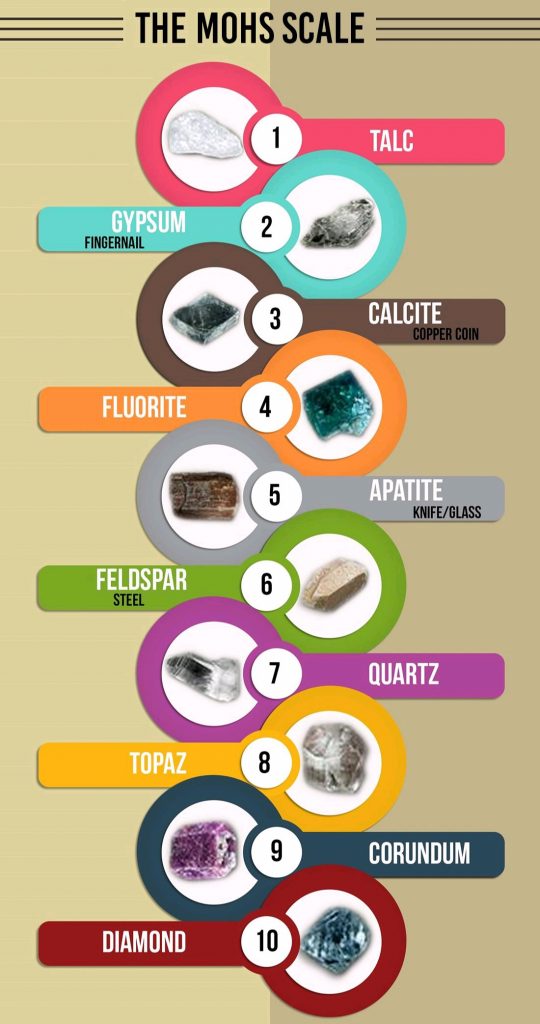MOHS SCALE OF MINERAL HARDNESS

MOHS SCALE OF MINERAL HARDNESS.
The Mohs scale of mineral hardness (or the Mohs hardness scale) is used by geologists all over the world as an identifying tool for minerals.
The basic principal is, that it characterises the scratch resistance of a softer mineral being scratched a harder mineral.
Developed in 1822 by Friedrich Mohs a German Geologist and mineralogist, it is one of several methods used to describe the hardness of minerals and materials in science, however it is the one most commonly used by geologists. Although it has been 200 years since the first implementation of the Mohs hardness scale, the method of comparing one mineral to another to ascertain its hardness is much older. The technique was mentioned in 300BCE by Theophrastus in his treatise On Stones, and then again in 77CE by Pliny the Elder in his Naturalis Historia.
The scale each uses a different mineral, and is ordinal in nature. The hardest known substance to man at the time of the scales creation was diamond, and as such diamond
TALC- Mohs hardness
1- Absolute hardness 1 GYPSUM- Mohs hardness
2- Absolute hardness 3 CALCITE- Mohs hardness
3- Absolute hardness 9 FLOURITE- Mohs hardness
4- Absolute hardness 21 APATITE- Mohs hardness
5- Absolute hardness 48 ORTHOCLASE FELDSPAR- Mohs hardness
6- Absolute hardness 72 QUARTZ- Mohs hardness
7- Absolute hardness 100 TOPAZ- Mohs hardness
8- Absolute hardness 200 CORRUNDUM- Mohs hardness
9- Absolute hardness 400 DIAMOND- Mohs hardness
10- Absolute hardness 1600
Whilst it is possible to buy a set of “Mohs Mineral Pencils” a set of pencils each mounted on the tip with a small piece of each of the minerals above, these for geologists are often more show pieces, and in the field it is important to know the hardness of ordinary materials to make mineral identification easier. A steel knife (very good for many applications in the field) has a hardness of about 6-6.5 whist a fingernail has a hardness of between 2 and 2.5. Just these two tools can make mineral identification so much easier!


Good blog post. I definitely appreciate this website. Thanks!
You are welcome, my friend.